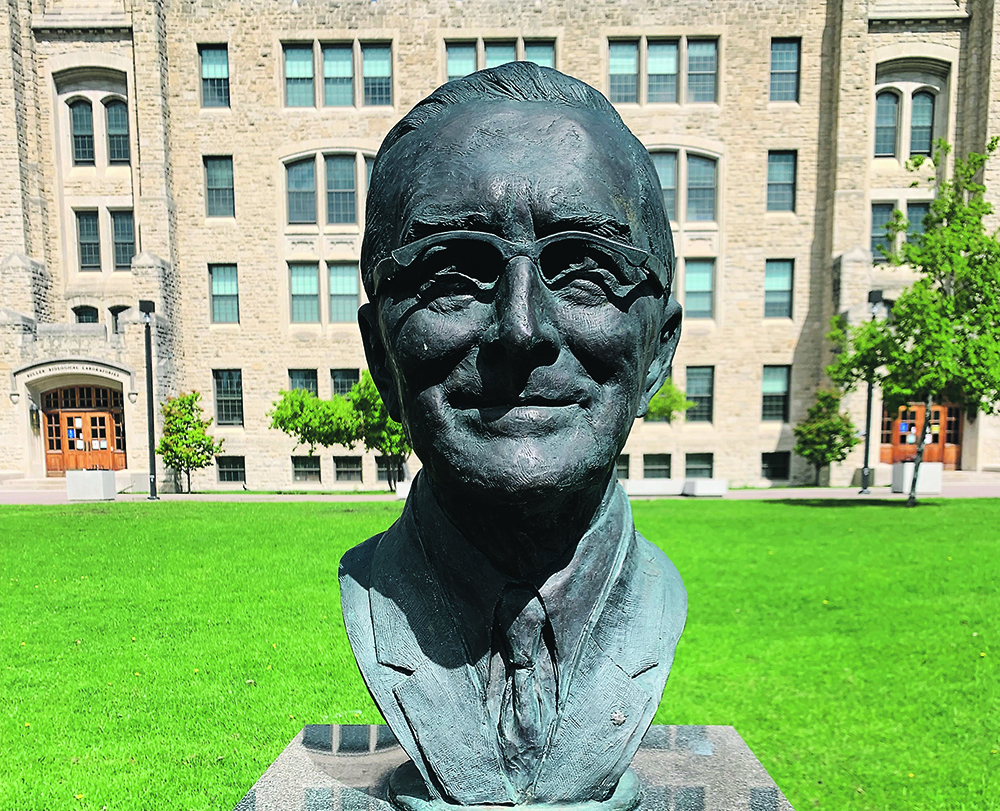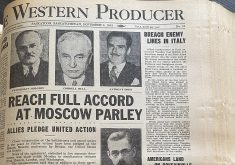The University of Manitoba has collected extensive archives remembering the researcher who helped develop the crop
Every day, thousands of people pass the Baldur Stefansson bust in the centre of the University of Manitoba’s main campus.
The U of M is extremely proud of the renowned crop developer, known jointly with Keith Downey as the “father of canola.”
His bust was the very first to be placed at Innovation Plaza, facing the stately Agricultural College building that now houses the university’s administration.
Few U of M students with an interest in crop innovation and development will fail to know of Stefansson’s greatest achievement. A global, multibillion-dollar industry, giving thousands of farmers their biggest money-maker and millions of consumers arguably the healthiest edible oil, has arisen from his pioneering efforts to transform indigestible rapeseed oil into what we have today.
This creation turned a dying prairie crop into a giant. It is something written about thousands of times over the history of The Western Producer. For farmers, the evolution of canola out of industrial rapeseed and into a global food crop is something they have lived and seen become a mainstream reality.
The evolution of canola as lived by Stefansson can be seen in great detail in a little-known treasure trove contained in the university archives, which are tucked behind scores of bookshelves and dozens of study carrels on an upper floor of the main library.
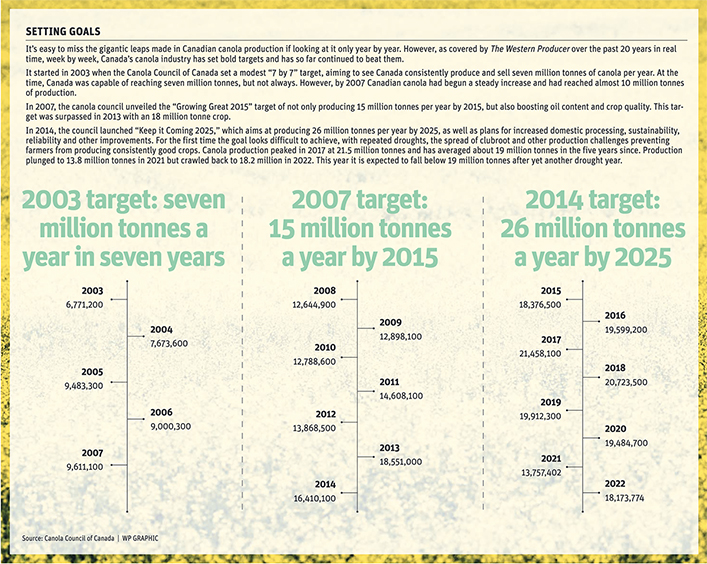
In four banker’s boxes sit slides, letters, documents, plaques, awards and other artifacts that span the years in which Stefansson worked on rapeseed and then canola.
Crop variety license documents dating back to the mid-1950s sit beside letters congratulating him on his many honours, as well as his generous replies to his many well-wishers.
A replica Order of Canada rests in the file holding that high honour’s details and ceremony. Slides of canola and canola diseases contain images of the crop that must have been shown at university or farmer sessions.
A thick file of newspaper clippings attests to the importance of journalism as the first draft of history and provides a snapshot of Stefansson’s career.
In 1971, the St. Catherine’s Standard accurately headlined “Rapeseed Research Indicates The Plant Is Very Important.” On Feb. 24, 1974, the Winnipeg Free Press reported “New Rapeseed Variety Licensed” when the Manitoba agriculture minister informed the legislature about the release of Tower, the first commercial “double zero” canola variety.
“Better Things Seen For Rapeseed”, declares a Canadian Press story. “NZ Contributes to Rape Seed Developments,” heralds the Gisborne Herald from New Zealand.
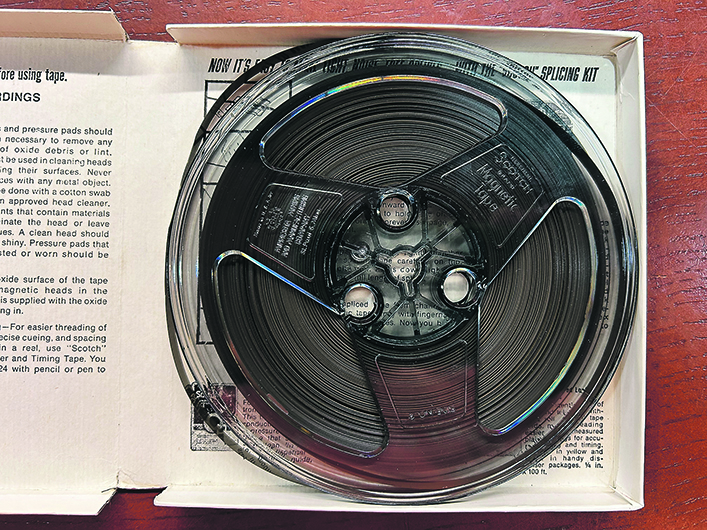
Numerous well-known agricultural journalists and publications appear in the clippings file, including Laura Rance, Allan Dawson and Larry Kusch, although most of the stories are from urban publications rather than the farm press. A single Western Producer story, by this reporter in 1996, sits in the file. For a more extensive collection of agricultural newspaper stories, one must look to other archives.
Many stories in the Icelandic language and from Icelandic publications attest to Stefansson’s great stature in the Canadian Icelandic community, of which he was a proud representative and at one time perhaps Canada’s most famous Icelander.
There are clippings from when he was awarded his Ph.D. in 1966, as well as his obituary from 2002.
Intriguingly, a reel-to-reel tape entitled “Dr. Baldur Stefansson: The Rapeseed Story,” from 1979 sits in a little box protected by the warning ARCHIVAL MATERIAL – DO NOT ERASE.
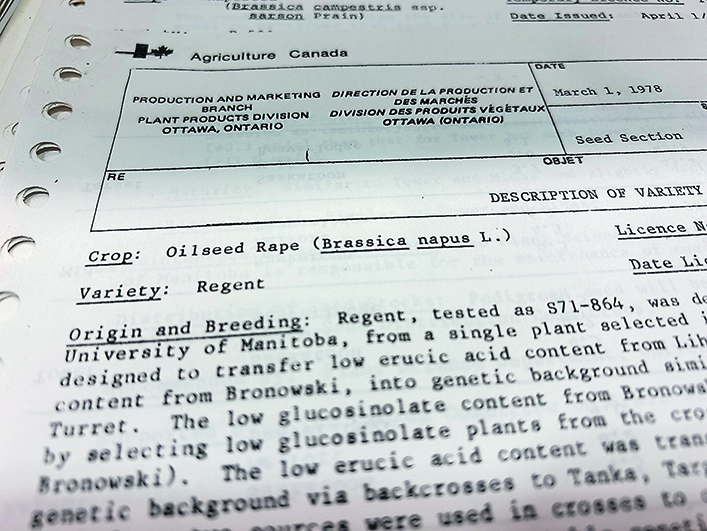
What is on this audio tape? Is it Stefansson’s voice and account of the creation of canola? Does it contain a voice now only heard in the halls of Valhalla?
That is unknown. The University of Manitoba archives do not have a reel-to-reel system any longer, and attempting to run this thin tape through a player would risk destruction. Following a Western Producer request, the archives will try to have the tape digitized by audio restoration specialists.
If this can be successfully saved and restored, The Western Producer will make sure readers are informed about how to hear it.
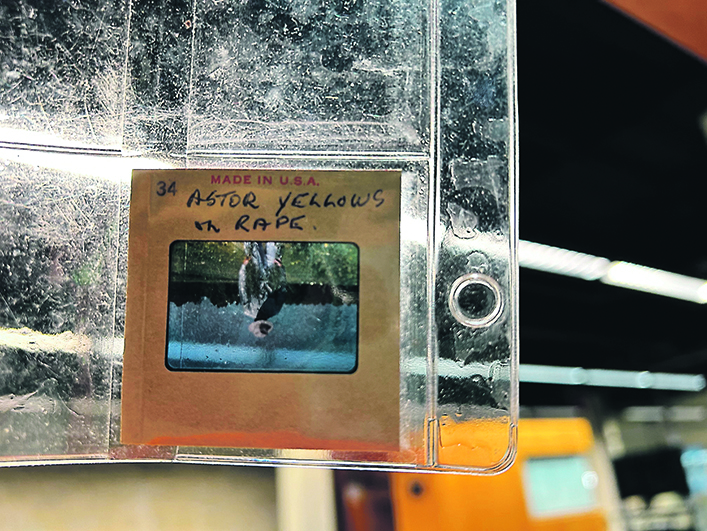
Stefansson’s face and name stand proudly in the middle of the University of Manitoba campus. Artifacts of his legacy are collected in boxes in the archives. Accounts of his activities and achievements exist in newspaper clipping collections.
But doubtless the greatest testament to this man’s story, one western Canadian farmers witnessed up close, stands across tens of millions of acres of prairie and foreign farmland: green in spring, yellow in high summer and black in the bin.
For all his many awards, that continuing gift to farmers is what he’d likely most value.




